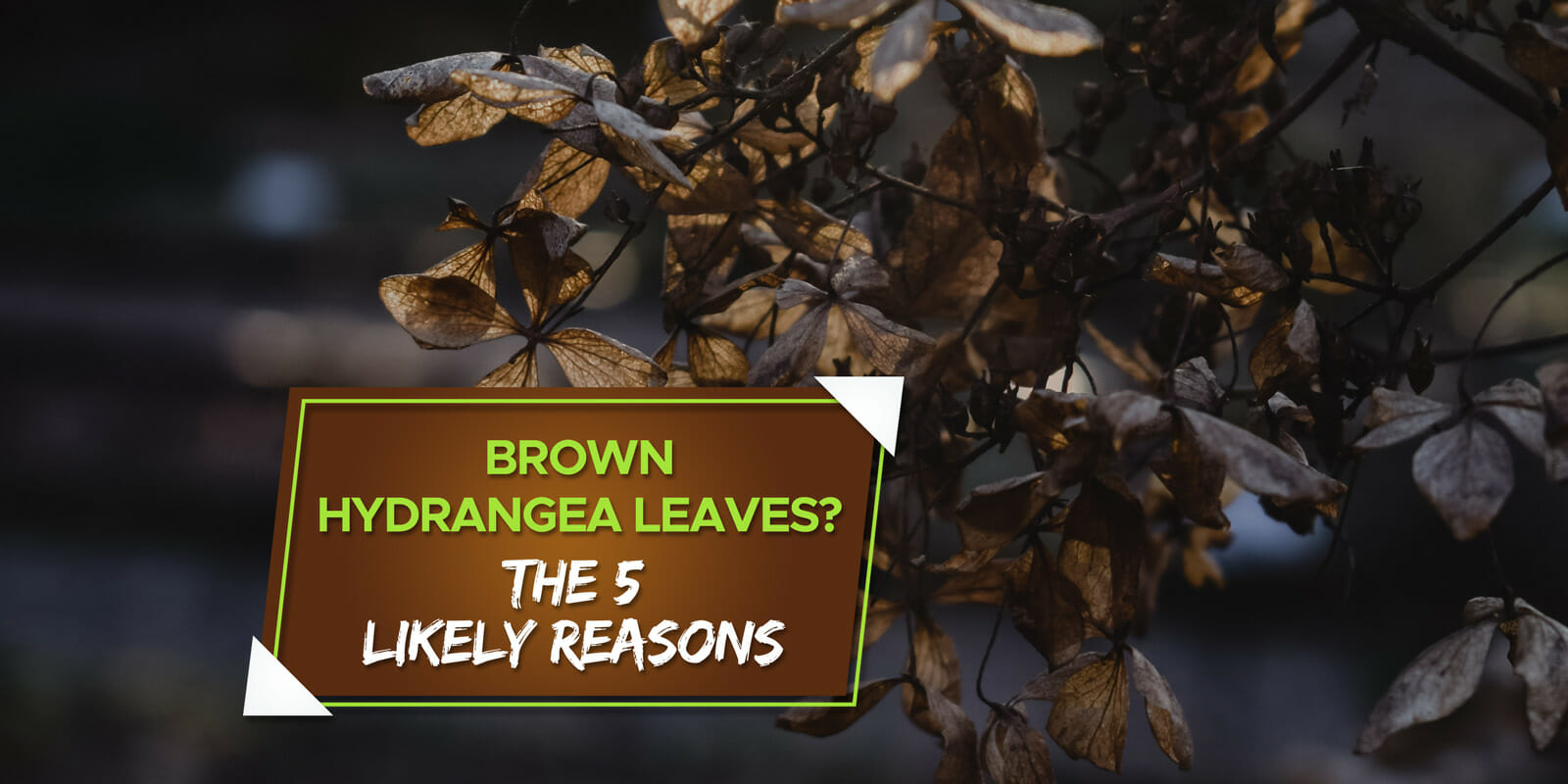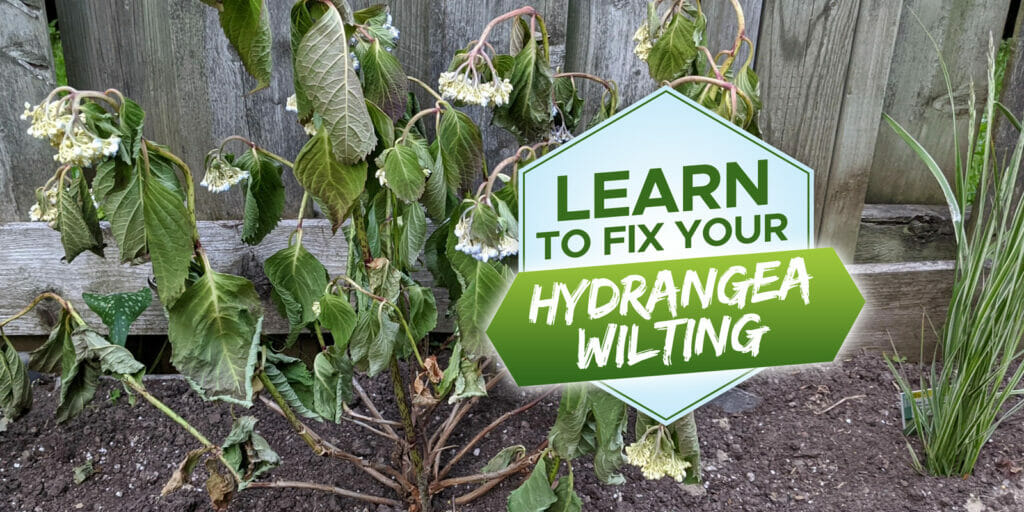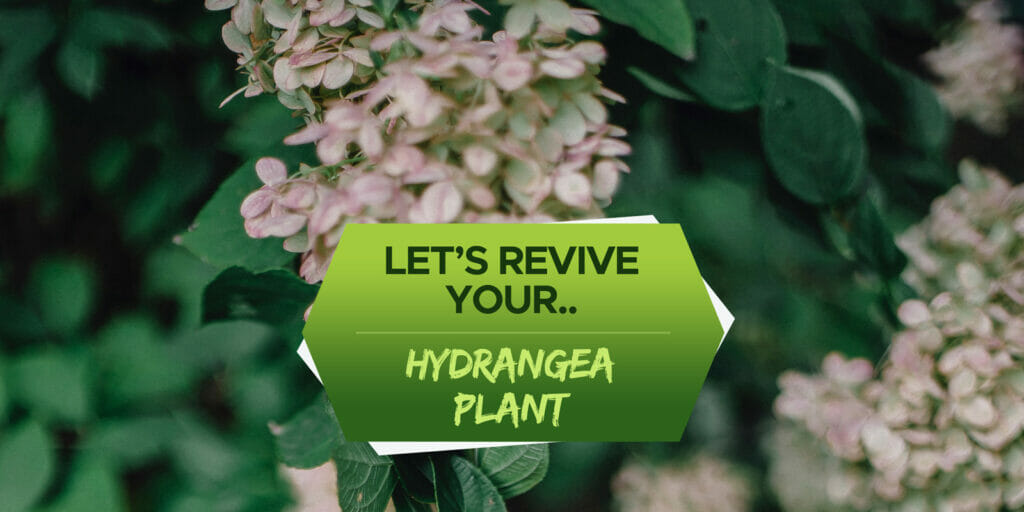Hydrangeas are an outstanding blooming bush that makes a significant impact in any garden. They are easy to grow and maintain, making them great for beginner gardeners. However, one issue that may spoil this effect is their large veined leaves going brown.
So why are your hydrangea leaves turning brown, and how can you fix it? There are five reasons that the leaves might be turning brown: burning, fungal damage, getting the leaves too wet, shock, and frequent wilting.
This may seem like a lot to think about, but don’t worry; there are easy fixes for all these problems that will keep your hydrangea leaves healthy and green.
This article is going to explain the five reasons why your hydrangea’s leaves are going brown and give you some tips to fix each issue.
Get to Know Hydrangeas
Alright, so before we get into the browning leaves, we need to get to know a little more about hydrangeas.
| Specification | |
| Order | Cornales |
| Family | Hydrangeaceae |
| Genus | Hydrangea |
Hydrangeas are a genus of large, deciduous flowering shrubs with 75 separate species. They are native to Asia and the Americas but are grown worldwide for their ornamental beauty.
The flowering bushes can grow from 2 ft high and wide to 6ft tall and wide. This makes them an ideal shrub to add a lot of height and color to a garden.
What makes hydrangeas so popular is their stunning and unique flowers. The small, delicate petalled flowers grow in large clusters that form round heads. These grow plentifully across the shrub and bloom from the summer through to fall. If their beauty alone wasn’t enough, hydrangeas will also attract butterflies.
The flowers can be white, red, blue, pink, and purple. In many species, the flowers will be white, but for hydrangea macrophylla and hydrangea serrata it is the soil conditions that determine their color. These shrubs can tolerate soil that is alkaline, neutral, or acidic; the only thing that will be affected is what color the flowers are. For instance, acidic soil will cause their flowers to bloom blue and purple.
Apart from the distinctive flowers, hydrangeas have incredibly beautiful leaves that are wide and serrated with prominent veins.
These lovely bushes prefer to be grown in semi-shade and watered thoroughly three times a week. This may increase during the growing season when the weather is particularly warm.
5 Reasons Your Hydrangea Leaves Are Turning Brown
Alright, now that we know a bit more about hydrangeas, let’s get down to this brown leaf issue.
There are five main reasons that hydrangea leaves might be going brown. We are going to dive into each reason and give you a fix for each one.
1. Burning
One of the main reasons that your hydrangea leaves might be turning brown is too much sun exposure.
Hydrangeas prefer to live in partially sunny spots where they will not be in full sun all day long. If this happens, the leaves will brown in patches where the sun has scorched them.
To prevent this from occurring, we suggest planting your hydrangeas in a spot that gets sun in the early morning or evening and is in shade for the hottest time of the day.
2. Getting the Leaves Wet
Hydrangea leaves do not like getting wet; when they do, they will rebel by turning brown. This will happen around the edges of the leaves and affect the shape, but the rest of the leaves will appear healthy.
This can be remedied by watering your hydrangeas at the base to avoid splashing any on the leaves. We recommend doing this gently, as splashing soil on the leaves can also cause the leaves to brown and lead to potential fungal infection.
3. Shock
Shock is something that can happen when a plant is transported as well as when they are transplanted or repotted. The leaves will brown in a similar way to when they get wet.
It is tough to avoid shock when handling your hydrangea but don’t worry; your plant should bounce back quickly. The only thing we can recommend to prevent this is massaging the roots and giving the plant good water once it has been replanted.
4. Fungal Damage
If the brown areas on the leaves are in spots across the surface of the leaf, then it is very likely that you have a fungal infection on your leaves. This can happen when there is too much moisture trapped around the plant.
Any leaves with fungal damage should be removed immediately to stop it from spreading. This should be enough to stop it, but you must take further preventative measures.
To prevent this from happening again, we recommend removing any plant debris from around the plant and making sure it is well pruned to allow for healthy airflow around the plant. This will stop excess moisture from being trapped around the plant to encourage fungal growth.
5. Frequent Wilting
In hot weather, hydrangeas can be prone to wilting. If this repeatedly happens when the weather is particularly hot, the leaves will start to turn brown from a lack of water.
Luckily, this is easy to prevent from happening. When the weather is warm, increase your watering for your hydrangeas to keep the leaves firm and green. You can also place mulch around the base of the plant to maintain the moisture in the soil.
Frequently Asked Questions:
Should I cut off brown hydrangea leaves?
Leaving brown leaves on your hydrangea won’t harm the plant unless it has a fungal infection, but we suggest removing them. You can do this gently by hand or using pruning shears.
The reason we recommend removing them is that firstly it ruins the look of the plant. Secondly, and most importantly, it is a waste of nutrients that the plant could send to healthy leaves and new growth.
If the leaves are browning for reasons other than a fungal issue in juvenile plants, we do not recommend cutting them away as the plant is still trying to establish itself.
How do I know if my hydrangea is overwatered?
It is very common to get plant ailments, and their causes are confused because they can look quite similar.
Overwatering is a tricky one, but the signs that you need to look out for are signs of root rot, stunted growth, fewer flowers, and eventually, even the death of the plant. Getting your watering schedule right is imperative for hydrangeas to flourish as they do not like sitting in very wet soil.
Conclusion
Seeing your hydrangea leaves turning brown can be very disheartening, but it is not the end of the world.
Whether you have merely spilled some water on the leaves or you have a fungal infection, there are ways that you can bring your hydrangea back to its former glory.
After going through this guide, you should be able to identify what is causing this problem and fix it so the leaves grow back beautiful and green.
We wish you luck with your hydrangea escapades!





